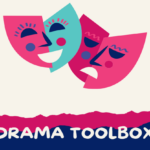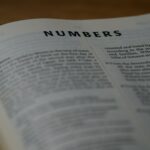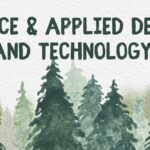
Book Title: The One and Only Ivan
Book Author: Katherine Applegate
Book Illustrator: Patricia Castelao
Book Type: Novel
Grade level(s): 4-6 reading level (could extend to other grade levels, depending how in depth you would want to get) Grade 3 with support
Topics: Animals/Rights,Friendship, Loyalty, Freedom, Hope, Family, Responsibility, Compassion, Empathy, Voice, Self-Expression
Subjects & Curricular Content/Competencies
English Language Arts (ELA) (Grade 5)
*Respond to text in personal and creative ways; *Identify how differences in context, perspectives, and voice influence meaning in texts;
*Use personal experience and knowledge to connect to text and develop understanding of self, community, and world;
*Story/text; Strategies/processes; Language features, structures and conventions
Social Studies (Grade 5)
*Past discriminatory government policies and actions; *Human rights and responses to discrimination in Canadian Society;
*Continuity and Change;
*Take Stakeholders’ perspectives on issues
Book Summary: A touching story based on true events, The One and Only Ivan is a story told from the perspective of a silverback gorilla that lived at the “Exit 8 Big Top Mall and Video Arcade” for over 27 years. Ivan, a relaxed and gentle gorilla spends his days drawing, watching tv and interacting with the other animals. When a new young elephant named Ruby comes to the mall, Ivan makes a promise to an aging sick elephant named Stella that he will help protect and save Ruby. Determined to stay true to his promise to Stella, Ivan uses his art to gain the attention of mall goers to alert them of the poor living conditions Ruby and they other animals have to endure. In the end, Ivans art work helps to free Ruby along with the other animals by them being sent to an animal sanctuary where they can live a better life. This is a heartwarming, feel good read that leads to reflection and self discovery along the way.
Book: Activity: As Ivan used his art to make a difference and a change in the animals living environment, have students create their own ‘Art for Change’. The purpose is to have students use their own artwork to communicate an important message about kindness, freedom, or animal rights. Students could expand their important message to include world issues or issues of Canadian minorities. Start with a discussion as a class of how Ivan used his artwork to create a message to help Ruby. Ask students to think about a message they care about deeply, maybe kindness towards animals, anti-bullying, freedom for all living things, local issues or issues from around the world. Pair ELA novel study of Story/Text and Language structures with Social Studies unit on human rights and discrimination in Canadian Society. Using markers, or paint, have students create a 11 x 17 artwork that supports their chosen message. Students may also choose to use magazines or computers to help with the creation of their art work. Hold a gallery walk after all artwork is completed. To compliment student’s artwork, you could ask them to extend their learning by writing a short paragraph or reflection that explains how art could help bring change to issues from around the world.

Book Title: Nuki?ni Kakaquxmaqa ?akic≠a?in One Green Tree
Book Author: Elizabeth Gravelle, Dorothy Alpine & Janice Alpine (Canadian, Indigenous, Local, BIPOC)
Book Illustrator: John Elliott (Canadian, Indigenous, BIPOC)
Book Type: Picture Book
Topics: Ktunaxa Language, Colours, Counting
Grade level(s): K-4
Subjects & Curricular Content/Competencies
English Language Arts (ELA) (Grade 2)
*Use personal experience and knowledge to connect to stories and other texts to make meaning;
*Show awareness of how story in First Peoples cultures connects people to family and community;
*Create stories and other texts to deepen awareness of self, family, and community;
*Story/Text;
*Strategies and process;
*Language features, structures and conventions
Mathematics (Grade 2)
*Incorporate First Peoples worldviews and perspectives to make connections to mathematical concepts;
*Communicate mathematical thinking in many ways; *Engage in problem-solving experiences that are connected to place, story, cultural practices, and perspectives relevant to local First Peoples communities, the local community, and other cultures
Book Summary: Nuki?ni Kakaquxmaqa ?akic≠a?in (One Green Tree) is a beautifully illustrated, educational book that provides an accessible way for readers to learn both the Ktunaxa language and the concept of numbers 1 through 10. Through its simple yet engaging format, the book introduces children to basic counting by incorporating vibrant illustrations and color recognition alongside language learning. Each page features a visual representation of a specific quantity such as one tree, two dogs, or three pairs of pants, followed by the corresponding Ktunaxa word for that number and its English translation. The book stands out not only for its educational value but also for its cultural significance. By using the Ktunaxa language, the authors offer readers a unique opportunity to connect with an Indigenous language that is an important part of the Ktunaxa people’s heritage. The bilingual structure fosters early language development, making it a helpful tool for those interested in learning both Ktunaxa and English.
Book: Activity: Have students create their own Ktunaxa Counting books combining ELA with Mathematics. The concept of Mathematics is much younger than the grade 2 curriculum as students will be able to count higher than 10, but adding in another language and the complex writing of completing sentences will bring the activity up to grade level. Activity could easily be altered for other grade levels. Review counting 1 – 10 with students in Ktunaxa. Take students for a short walk around your school or to a nearby nature park, depending where your school is located. During the walk, see what students can find in nature (Flowers, rocks, leaves) that corresponds to the numbers 1-10. Once back at the school, students will create their number books by translating their findings to Ktunaxa. Use Alfred Joseph’s Walkabout book and All Living Things books, to help students find the Ktunaxa translation of words. Invite an elder in to work with students as well. Once students have 10 pages with Ktunaxa and English translation, have student illustrate a picture or if possible, take pictures of objects when out on your nature walk.
Example of book: One tree (Nuki?ni); Two flowers (Kakaquxmaqa); Three leaves (akic≠a?in) etc.

Book Title: I Am Enough
Book Author: Grace Byers (BIPOC)
Book Illustrator: Keturah A. Bobo (BIPOC)
Book Type: Picture Book
Topics: Self-Love, Empowerment, Self-acceptance, Diversity, Kindness, Rhythmic Language, Self-Esteem
Grade level(s): K – 6 (Simple reading geared for Primary, However the message is important for all elementary grade levels)
Subjects & Curricular Content/Competencies
English Language Arts (ELA) (Grade 4)
*Use personal experience and knowledge to connect to text and deepen understanding of self, community, and world;
*Use language in creative and playful ways to develop style;
*Story/Text;
*Strategies and process;
*Language features, structures and conventions
Arts Education (Grade 4)
*Create artistic works collaboratively and as an individual using ideas inspired by imagination, inquiry, experimentation, and purposeful play;
*Explore identity, place, culture, and belonging arts experiences;
*Explore relationships among cultures, societies, and the arts;
*Express, feelings, ideas, and experiences in creative ways;
*Elements and principles that together create meaning in the arts;
*Image development strategies
Book Summary: I Am Enough is a heartfelt and inspiring book by Grace Byers that encourages self-acceptance, kindness, and the inherent value of everyone individually. The key message in the book is “You are you, and I am me,” emphasizes the true meaning of being true to one’s self. The story uses rhythmic language to depict what makes a young girl “enough” just by being her. Inspired by her own childhood experiences of being bullied as an African American and a child of deaf parents, Byers wrote this simple yet powerful book to empower children to embrace what makes them unique. The story encourages children to recognize their own self-worth while also treating others with respect. The story reminds us that when we bring our differences together, we create a beautiful, supportive community.
Book Activity: This activity could be adapted based on the grade of the students. The idea is to celebrate each student for what makes them unique and ‘enough’. Start with a large piece of paper, about the size of a poster board or flip chart paper. Have students stand on the paper and trace their shoes at the bottom of the paper as well as their hands near the middle of the paper. From there, have students create a self-portrait of themselves as if they are falling backwards (laying on their back with hands and feet in the air). The illustration should be a full body image of the student. Students are then encouraged to include words or illustrations to show what makes them unique such as interests, their culture, family, likes and dislikes. Encourage students to get creative with how they highlight their uniqueness! Students are encouraged to use a variety of colours to highlight different aspects of their illustration. The full size of the paper must be coloured in. Once all portraits are completed, together they will form our beautiful class community. Activity adapted from Stephanie Halldorson’s Classroom Activity “Fall into Me”

Book Title: When I was Eight
Book Author: Christy Jordan-Fenton & Margaret-Olemaun Pokiak-Fenton (Canadian, Indigenous, BIPOC)
Book Illustrator: Gabrielle Grimard (Canadian)
Book Type: Picture Book
Topics: Residential Schools, Assimilation, Identity, Belonging, Family
Grade level(s): 3-6
Subjects & Curricular Content/Competencies
English Language Arts (ELA) (Grade 6)
*Apply appropriate strategies to comprehend written, oral, and visual texts, guide inquiry, and extend thinking;
* Synthesize ideas from a variety of sources to build understanding;
*Recognize how language constructs personal, social, and cultural identity;
*Construct meaningful personal connections between self, text, and world;
*Exchange ideas and viewpoints to build shared understanding and extend thinking;
* Story/text; Strategies/processes; Language features, structures and conventions
Art Education (Grade 6)
*Purposeful application of elements and principles to create meaning in the arts -Drama;
*Choreographic devices;
*a variety of dramatic forms;
*Personal and collective responsibility associated with creating, experiencing, or presenting in a safe learning environment;
*Explore relationships between identity, place, culture, society, and belonging through the arts;
*Express, feelings, ideas, and experiences through the arts
Book Summary: When I was Eight, is a beautifully illustrated book of the true story of Margaret-Olemaun Pokiak-Fenton’s experiences and memories as a child in a residential school. A picture book adaptation of the middle school novel Fatty Legs, the story tells of an eight-year-old Inuit girl who begs her father to allow her to attend school to learn to read and write like her older sister. School is not what the young girl expected as she was forced to cut her hair, wear scratchy clothes, given a new English name and forced to perform chores. The young girl is resilient in her efforts to learn to read and write without losing herself in the process.
Book: Activity: Start with a class discussion to ensure comprehension of the story. Pause during reading to analyze the characters, explore cause and effect, make connections, predict outcomes, and discuss different points of view. After finishing the book, have students break into small groups of 3-4, with each member of the group choosing a different character role from the book (e.g., Margaret, the Nun, etc.). Read the book again, pausing throughout for students to create dramatic tableaus of key scenes. As they act out these scenes, encourage them to focus on the emotions the characters are experiencing. Have students use varied dramatic forms and levels in their tableaus to enhance expression, feelings, and intensity. Afterward, lead a class discussion about how the students felt while playing their characters. As a follow-up to story dramas, have students reflect on their character and consider how they might change a scene. What would they change, and why? How does Margaret’s experience at the school compare to that of other children in residential schools? Students will write their ideas down in their journals, or on a worksheet. Activity idea comes from Drama 305A from our story drama assignment

Book Title: Sometimes I Feel Like a River
Book Author: Danielle Daniel (Canadian, Indigenous, BIPOC)
Book Illustrator: Josée Bisaillon (Canadian)
Book Type: Picture Book
Topics: Emotional Awareness, Nature, Environment, Mindfulness, Self-discovery
Grade level(s): Grade 1-3
Subjects & Curricular Content/Competencies
English Language Arts (ELA) (Grade 3)
*Use sources of information and prior knowledge to make meaning
*Make connections between ideas from a variety of sources and prior knowledge to build understanding
Use personal experience and knowledge to connect to text and make meaning
*Communicate using sentences and most conventions of Canadian spelling, grammar, and punctuation
Science (Grade 3)
*Demonstrate curiosity about the natural world
*Cooperatively design projects
*Biodiversity in the local environment
*Major local landforms
*Observable changes in the local environment cause by erosion and deposition by water
Book Summary: Sometimes I Feel Like a River is a refreshing picture book that features 12 short poems, each helping a child to connect with nature to explore different emotions and coming together to create a thoughtful and respectful book about our connections to the natural world. The story emphasizes that we are all part of the natural world, with our moods and actions mirroring that of nature. Through this connection, children are encouraged to notice and appreciate the importance of protecting and preserving the environment. In addition to the story, the book includes a mindfulness activity that encourages children to observe their surroundings and reflect on how these aspects of nature make them feel.
Book: Activity: Start with a science lesson on the formation of rivers, source of headwaters, tributaries, erosion and transformation through land. As our moods and actions mirror much of the natural world, expand this lesson to show how we as humans grow and change much like a river. As humans we are influenced by the world around us, we grow as we take on knowledge, we are shaped as we navigate life’s triumphs and challenges, and as we go for hopes and dreams meet the end of the river. Next, students will create their own river to show how they have grown and changed over the years on a large piece of paper. Have students draw a long snake like river on their paper, making sure to have a few bends and curves along the way (not too many as these are their challenges). At the start of the river students will write about an early memory, their family or where they were born. Students will need to add tributaries to their rivers, these are people that have helped them grow or important milestones such as learning to walk, ride a bike, starting school, making a new friend. They will also want to mark challenges such as a hard test, not making the hockey team, or a family move. These are there bends in their rivers. The end of their river is a goal that they want to get to such as learning to play an instrument, career goal, whatever they feel represents their future aspirations. Students should colour and decorate their rivers. The goal is for students to see that everyone’s ‘river’ is different, and we all have triumphs and challenges along they way, but despite these differences, its always possible to reach the end of your river or your goals. We all learn and grow as we go. Students may which to create a brainstorming web to plan their tributaries (positive experiences), bends (Challenges), and goals.





